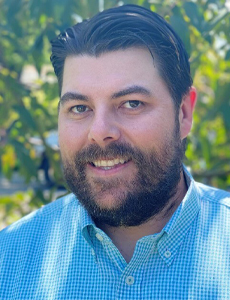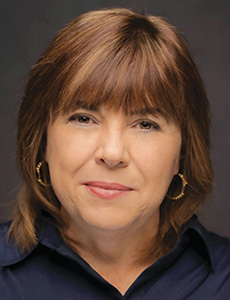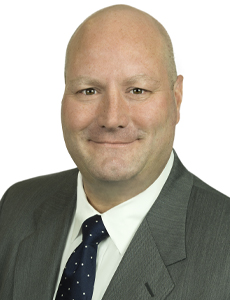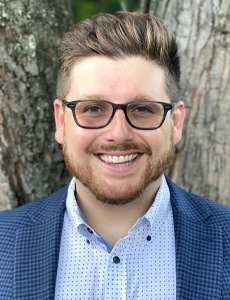
It’s been an interesting few years for the property insurance market, to put it mildly. Inflation, climate change, the transition to sustainable energy and shrinking capacity in reinsurance markets have all contributed to rising premiums; McKinsey puts the increase at between 6 and 8% for each year since 2018 across all global P&C lines, and most property lines in the U.S. have seen even sharper spikes.
This volatility has prompted some carriers to pull out of certain markets entirely. Seven of the largest home insurers have scaled back or stopped insuring homes in California, largely due to wildfires; major carriers have scaled back or pulled out of Florida due to hurricanes; and Louisiana faces a crisis as carriers cut capacity after a series of floods and hurricanes dating back to 2020.
“Usually, businesses are coming to us with a problem,” said Eric Funk, captive senior accounting manager at NFP’s Risk & Insurance Strategy Collective (RISC). “Right now, that problem tends to be property, because they’re seeing a cutback of capacity in the market. And they’re seeing huge increases — double digits, up to 30%.”
But with a captive, Funk said, “you can start building capital up to then use as a risk management leveraging tool, because once you have it set up, you can even use it to cover risks that are now being excluded — like CAT coverage, whether it’s hurricanes in the Gulf Coast or earthquakes in California.”

Jonathan Spencer, assistant chief examiner with the State of Vermont’s Department of Financial Regulation Captive Insurance Division, agreed: “More and more people are seeing the potential benefits of a captive program. Especially in a hardening market, you’re no longer at the total mercy of the commercial market.”
Property and captives are a natural fit, according to Steve Bauman, global programs & captives director, Americas, AXA XL. “Companies have a long history of using their captives for property,” he said. “When a hard market comes about — and we’re in the throes of a hard market — that’s the perfect opportunity for insureds to use their captive for property.”
Smoothing the Road Ahead
There are several ways captives can help risk managers improve their property programs, and naturally, cost is chief among them. By avoiding the wild swings in capacity and pricing in the traditional market, captives confer a degree of consistency.
This is especially true where carriers are pulling out of markets.
“A lot of capacity that’s come into the marketplace in the last several years is captive utilization,” Bauman said. In previous hard cycles, he explained, “new insurance companies and new capital came pouring into the market. This one has been a bit different … This [hard cycle] seems a bit more muted in terms of new entrants. But what you have seen is the stepping up of captive utilization to fill that void.”
And, over the longer term, these captives can achieve their ultimate goal: lower premiums. By creating a vehicle in which to retain risk, captives give companies an alternative to paying whatever the traditional market demands.

“You now have leverage with the market, because you aren’t relying solely on the market,” said TJ Scherer, VP of Spring Consulting Group. “You could say, ‘At this price, I will transfer the risk. At this price, I will not.’ You’re leveraging your captive as a new retention vehicle — and you may not do that in year one or year two, but over time, it becomes part of your overall strategy and leverage with the market.”
In fact, “leverage” is the watchword for property captive use, giving risk managers the flexibility to choose which risks to retain and where, generating savings and even profit.
Fits Like a Glove
For instance, when carriers respond to unexpected catastrophes by introducing large exclusions or buydowns, captives are able to retain that risk and keep properties in compliance. If a solar farm faces a wind exclusion following a string of claims, for instance, a captive can step in to fill that gap.

Theresa Severson, VP of insurance & risk at Kite Realty, a large REIT, explained that “40% of our portfolio is in wind Tier 1, so hurricanes are a definite exposure for us. But we also face convective storms.” As a result, she said, “I look at our philosophy as being captive-centric, always starting captive-forward. But we also will react to what the market is offering. Our modeling shows us where we have expected losses, and when I look at the premiums they’re offering in the standard market, if it makes sense to buy it through a third party, then we’ll go that way. If what they’re offering us from a coverage and pricing standpoint doesn’t make sense based upon my modeling, then I’ll put it into the captive and manage it that way.”
Captives also offer the advantages of hands-on attention and speedier outcomes, some of which are due to the domicile in which they’re licensed.
“Vermont is very easy to work with,” Severson said. “They’re understanding. They respond very quickly to questions. I’ve always had a really good working relationship with Vermont.”
Skin in the Game
As companies with a captive realize savings, they often undergo a change in culture as well: No longer can they simply pay their premiums and expect an insurer to take care of whatever claims may arise. Rather, risk engineering becomes a way to grow a surplus of funds, and even potential dividends.

“There’s greater motivation to try and curb [loss],” Bauman said, and that money can then be reinvested into property resilience. “Many captives loan money back to their parent,” Bauman explained, “and that money can then be used to enhance loss-control efforts. If a risk manager knows they have some significant funds in their captive, they can, for example, put sprinklers in a building that didn’t have them. [That’s] a great benefit where budgets are tight.”
And the ways to predict and prevent property losses are endless: investing in flood barriers and sensors, RMIS and software to parse risk data, to name just a few.
“You can use the funds that your captive has built up to help fund some of those loss-control initiatives, if it’s something that impacts the overall loss ratio for the captive,” Severson said. “We have a system called Hail Alert that will send us notifications of hail events that happened at any of our centers and tell us the size of that hail … We can then go ahead and be proactive, see if there’s any damage, and make any repairs that we need.”
For risk managers trying to build resilience measures into a budget, a captive can help higher-ups see the benefit of a proactive approach. It can also ensure they’re part of the conversation in the first place.
“Having a captive gives me a seat at the table when it comes to the C-suite and even the board, because I’m reporting to our board with regards to the captive and how it’s operating. It’s a way of putting a bigger lens on your risk initiatives,” Severson said. “When you have that skin in the game, it is much easier to get buy-in for different safety initiatives, loss-control initiatives or risk management initiatives within the organization, because we really are talking about our own money.”
It can even help get buy-in from the front lines: “It’s a little bit different when you’re talking to the boots-on-the-ground people, the property managers, and explaining to them that this is our money,” she added.
A Journey Begins

They say the best time to plant a tree was 20 years ago, but the second-best time is now. The same is true of starting a captive: Companies whose captives are fully mature will be gratified they have options when navigating today’s property insurance market, but for those still facing rising premiums and exclusions, it’s never too late. And because captives aren’t a one-size-fits-all solution, they can start small and grow over time, helping to address a company’s ever-shifting pain points.
“Taking on more risk is when the captive builds and builds,” Bauman said. Eventually, “captives get to a point where they can take on volatility. It’s got to be very measured, and captives have to lean on their partners.”
In this, there’s no better partner than Vermont.
“They have the depth. They have the expertise. They have the legislation,” Funk said. “They’re the biggest and best in the world for a reason.”


